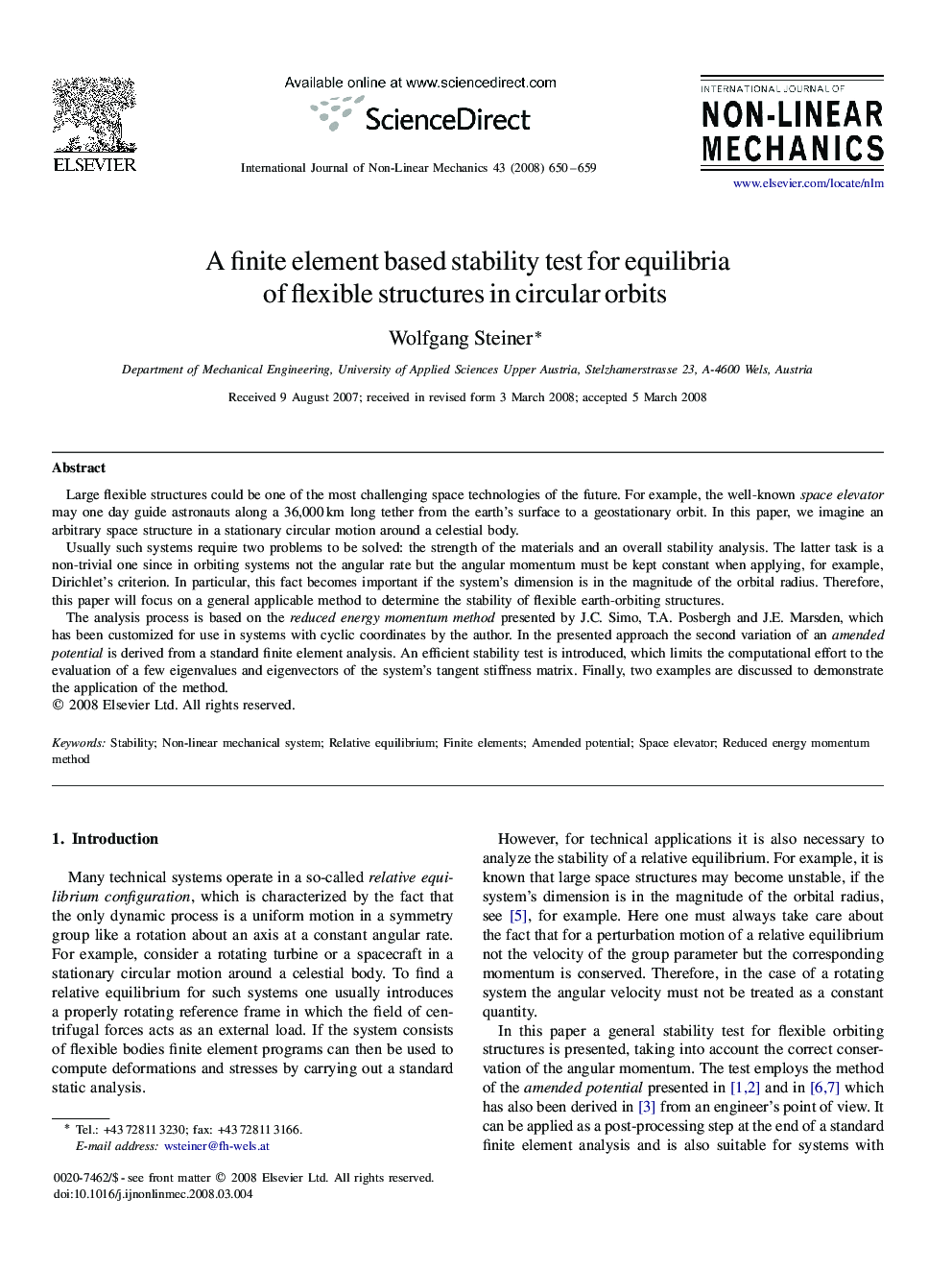| Article ID | Journal | Published Year | Pages | File Type |
|---|---|---|---|---|
| 785154 | International Journal of Non-Linear Mechanics | 2008 | 10 Pages |
Large flexible structures could be one of the most challenging space technologies of the future. For example, the well-known space elevator may one day guide astronauts along a 36,000 km long tether from the earth's surface to a geostationary orbit. In this paper, we imagine an arbitrary space structure in a stationary circular motion around a celestial body.Usually such systems require two problems to be solved: the strength of the materials and an overall stability analysis. The latter task is a non-trivial one since in orbiting systems not the angular rate but the angular momentum must be kept constant when applying, for example, Dirichlet's criterion. In particular, this fact becomes important if the system's dimension is in the magnitude of the orbital radius. Therefore, this paper will focus on a general applicable method to determine the stability of flexible earth-orbiting structures.The analysis process is based on the reduced energy momentum method presented by J.C. Simo, T.A. Posbergh and J.E. Marsden, which has been customized for use in systems with cyclic coordinates by the author. In the presented approach the second variation of an amended potential is derived from a standard finite element analysis. An efficient stability test is introduced, which limits the computational effort to the evaluation of a few eigenvalues and eigenvectors of the system's tangent stiffness matrix. Finally, two examples are discussed to demonstrate the application of the method.
